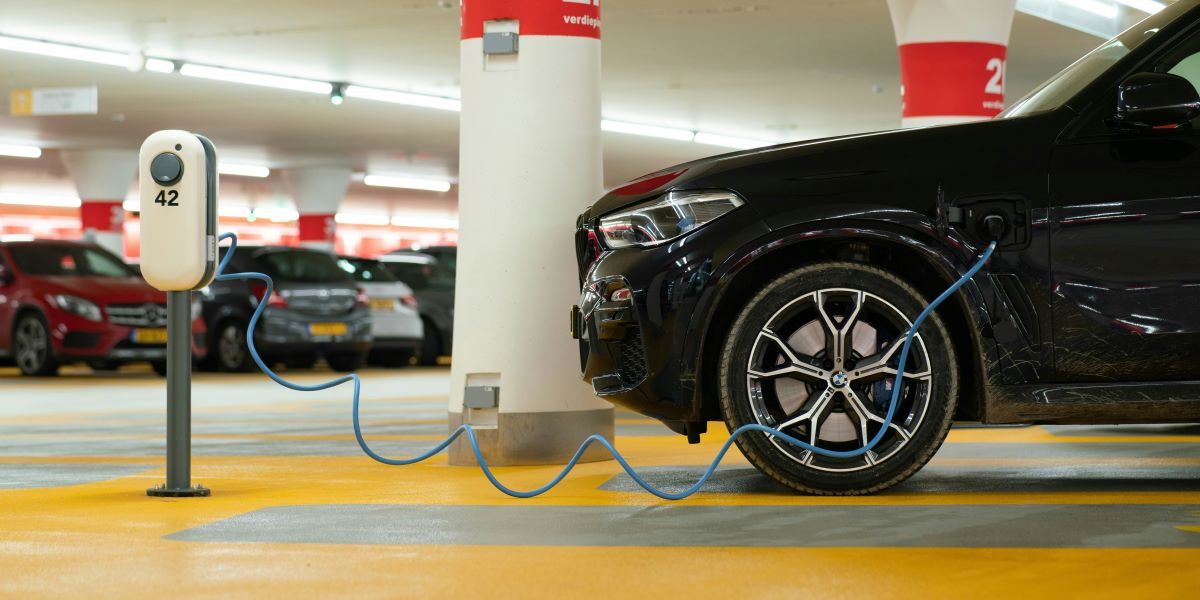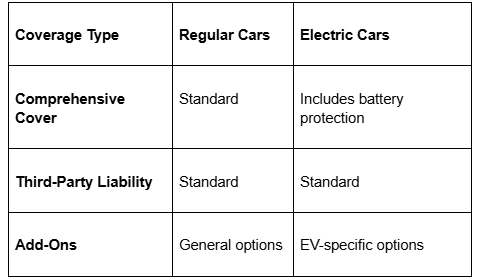By: PR Fueled
Electric cars are becoming increasingly popular, offering eco-friendly transportation and innovative technology. However, insuring an electric car differs significantly from insuring traditional vehicles.
Let’s explore the unique aspects of a car insurance policy for electric vehicles and how they contrast with regular car insurance.
Key Differences Between Electric Car Insurance and Regular Car Insurance
Electric cars require specialized insurance coverage due to their unique components and higher upfront costs. Here’s a breakdown of key differences:
1. Premium Costs
Electric car insurance typically has higher premiums than traditional car insurance. This is due to the advanced technology and specialized parts that require more expensive repairs.
2. Repairs and Maintenance
Electric cars have fewer moving parts than internal combustion vehicles, but their components—like the battery—are costly to repair or replace. Regular car insurance does not account for these specific needs.
3. Battery Coverage
A car insurance policy for electric vehicles often includes separate coverage for the battery, which is one of the expensive components. Regular car insurance does not offer this kind of specific protection.
4. Availability of Insurers
Fewer insurers currently offer dedicated car insurance for electric cars, making it a niche product compared to the wide availability of policies for conventional vehicles.
Factors That Impact Electric Car Insurance Costs
Various factors influence the cost of electric car insurance. Understanding these elements can help you budget effectively:
1. Vehicle Value
Electric vehicles often have a higher upfront cost, directly impacting insurance premiums.
2. Repair Costs
Electric car repair requires specialised technicians and tools, contributing to higher claims.
3. Usage Patterns
Insurers may assess how frequently the car is used. Lower mileage can sometimes result in reduced premiums.
4. Safety Features
Advanced safety systems can reduce accident risks, which may lower your premium.
5. Battery Replacement Costs
Since batteries are expensive, insurers factor their replacement cost into the premium calculation.
5 Insurance Coverage Options for Electric Cars
Insurance providers offer specific options for EVs, ensuring comprehensive protection:
1. Comprehensive Cover
Protects against theft, fire, vandalism, and natural disasters. It also includes liability for third-party injuries or property damage.
2. Battery Coverage
This is specific to electric cars and covers battery repair or replacement costs.
3. Third-party Liability
Covers legal liabilities if your vehicle causes injury or damage to others.
4. Own Damage Cover
Provides financial support for repairing damages to your vehicle due to accidents or mishaps.
5. Add-Ons for Electric Vehicles
- Zero Depreciation Cover: Offers full claim settlement without factoring in depreciation.
- Roadside Assistance: Offers support in case of battery depletion or breakdown.
- Charging Equipment Cover: Protects against damage or theft of home charging equipment.
Why is Electric Car Insurance Typically More Expensive?
Insuring electric cars can cost more than traditional vehicles due to several reasons:
1. High Vehicle Cost
Electric cars are generally more expensive than petrol or diesel, increasing the overall insured value.
2. Specialized Repairs
Repairs require trained professionals and specialized equipment, which raises the cost of claims.
3. Battery Expenses
The battery constitutes a significant portion of the car’s value, leading to higher premiums.
4. Limited Insurer Options
With fewer insurers offering electric car insurance, competition is lower, keeping premiums higher.
Tips to Lower Your Electric Car Insurance Premium
Despite higher premiums, there are ways to save on electric car insurance. Follow these tips to reduce costs:
1. Install Safety Features
Advanced safety measures, such as anti-theft devices may lower premiums.
2. Opt for Higher Voluntary Deductibles
A higher deductible can reduce your premium amount, although it increases out-of-pocket expenses during claims.
3. Choose Usage-based Insurance
If you drive less frequently, a usage-based plan might lower your costs.
4. Maintain a Clean Driving Record
Safe driving habits can help you earn discounts on your premium.
Electric cars are shaping the future of transportation, and their insurance requirements are evolving accordingly. Understanding how car insurance for electric cars differs from regular policies can empower you to choose suitable coverage. With the right car insurance policy, you may better manage the financial aspects of owning an electric car and reduce the impact of unexpected costs.
Disclaimer: This article is for informational purposes only and should not be construed as financial or insurance advice. Insurance policies and premiums vary depending on various factors, including location, vehicle type, and individual circumstances. We recommend consulting a licensed insurance professional for personalized advice tailored to your needs.
Published by Tom W.





















